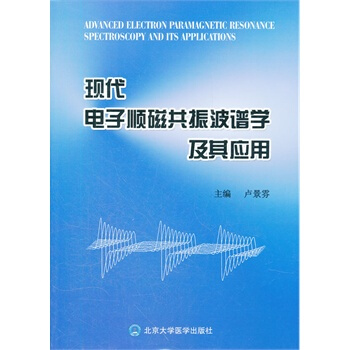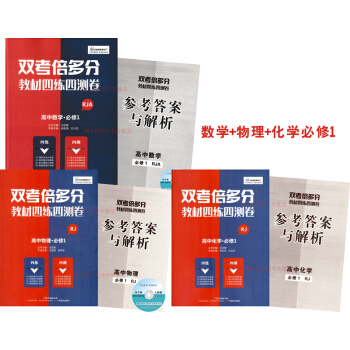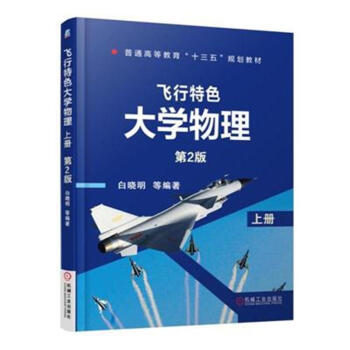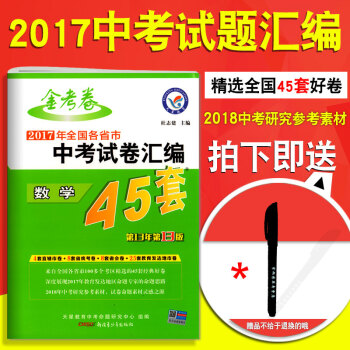![[按需印刷]应用非线性控制(英文版) (美)Jean-Jacques E…|21888](https://pic.tinynews.org/25200617480/5b3444f8N8c91bb19.jpg)

具体描述
| 书名: | 应用非线性控制(英文版)[按需印刷]|21888 |
| 图书定价: | 100元 |
| 图书作者: | (美)Jean-Jacques E.Soltine,Weiping Li |
| 出版社: | 机械工业出版社 |
| 出版日期: | 2004-10-01 0:00:00 |
| ISBN号: | 7111152182 |
| 开本: | 16开 |
| 页数: | 461 |
| 版次: | 1-1 |
| 作者简介 |
| Jean-Jacques E.Slotine于麻省理工学院获得博士学位。现任麻省理工学院机械工程系及信息科学系教授,非线性系统实验室主任。他的主要研究方向包括机器人学、非线性控制、学习系统等。 |
| 内容简介 |
| 本书详细探讨了现代非线性系统的分析与设计技术,并提供了分析非线性系统的工具。主要内容包括相平面分析、描述函数分析、反馈线性化、滑动控制以及自适应控制等。另外,还提供了大量例题与习题,便于教学。 本书结构安排合理,实践性强,适合作为高等院校理工科专业的教材,同时对非线性控制初学者以及相关工程技术人员来说也是一本很好的参考书。 |
| 目录 |
Preface iii 1. Introduction 1.1 Why Nonlinear Control ? 1 1.2 Nonlinear System Behavior 4 1.3 An Overview of the Book 12 1.4 Notes and References 13 Part I: Nonlinear Systems Analysis 14 Introduction to Part I 14 2. Phase Plane Analysis 17 2.1 Concepts of Phase Plane Analysis 18 2.1.1 Phase Portraits 18 2.1.2 Singular Points 20 2.1.3 Symmetry in Phase Plane Portraits 22 2.2 Constructing Phase Portraits 23 2.3 Determining Time from Phase Portraits 29 2.4 Phase Plane Analysis of Linear Systems 30 2.5 Phase Plane Analysis of Nonlinear Systems 32 2.6 Existence of Limit Cycles 36 2.7 Summary 38 2.8 Notes and References 38 2.9 Exercises 38 3. Fundamentals of Lyapunov Theory 40 3.1 Nonlinear Systems and Equilibrium Points 41 3.2 Concepts of Stability 47 3.3 Linearization and Local Stability 53 3.4 Lyapunov's Direct Method 57 3.4.1 Positive Definite Functions and Lyapunov Functions 58 3.4.2 Equilibrium Point Theorems 61 3.4.3 lnvariant Set Theorems 68 3.5 System Analysis Based on Lyapunov's Direct Method 76 3.5.1 L yapunov Analysis of Linear Time-lnvariant Systems 77 3.5.2 Krasovskii' s Method 83 3.5.3 The Variable Gradient Method 86 3.5.4 Physically Motivated Lyapunov Functions 88 3.5.5 Performance Analysis 91 3.6 Control Design Based on Lyapunov's Direct Method 94 3.7 Summary 95 3.8 Notes and References 96 3.9 Exercises 97 4. Advanced Stability Theory 100 4.1 Concepts of Stability for Non-Autonomous Systems I01 4.2 Lyapunov Analysis of Non-Autonomous Systems 105 4.2.1 Lyapunov' s Direct Method for Non-Autonomous Systems 105 4.2.2 Lyapunov Analysis of Linear Time-Varying Systems 114 4.2.3 * The Linearization Method for Non-Autonomous Systems 116 4.3 * Instability Theorems 117 4.4 * Existence of Lyapunov Functions 120 4.5 Lyapunov-Like Analysis Using Barbalat's Lemma 122 4.5.1 Asymptotic Properties of Functions and Their Derivatives 122 4.5.2 Barbalat' s Lemma 123 4.6 Positive Linear Systems 126 4.6.1 PR and SPR Transfer Functions 126 4.6.2 The Kalman-Yakubovich Lemma 130 4.6.3 Positive Real Transfer Matrices 131 4.7 The Passivity Formalism 132 4.7.1 Block Combinations 132 4.7.2 Passivity in Linear Systems 137 4.8 * Absolute Stability 142 4.9 * Establishing Boundedness of Signals 147 4.10 * Existence and Unicity of Solutions 151 4.11 Summary 153 4.12 Notes and References 153 4.13 Exercises 154 5. Describing Function Analysis 157 5.1 Describing Function Fundamentals 158 5.1.1 An Example of Describing Function Analysis 158 5.1.2 Applications Domain 162 5.1.3 Basic Assumptions 164 5.1.4 Basic Definitions 165 5.1.5 Computing Describing Functions 167 5.2 Common Nonlinearities In Control Systems 169 5.3 Describing Functions of Common Nonlinearities 172 5.4 Describing Function Analysis of Nonlinear Systems 179 5.4.1 The Nyquist Criterion and Its Extension 180 5.4.2 Existence of Limit Cycles 182 5.4.3 Stability of Limit Cycles 184 5.4.4 Reliability of Describing Function Analysis 186 5.5 Summary 187 5.6 Notes and References 188 5.7 Exercises 188 Part II: Nonlinear Control Systems Design 191 Introduction to Part H 191 6. Feedback Linearization 207 6.1 Intuitive Concepts 208 6.1.1 Feedback Linearization And The Canonical Form 208 6.1.2 Input-State Linearization 213 6.1.3 Input-Output Linearization 216 6.2 Mathematical Tools 229 6.3 Input-State Linearization of SISO Systems 236 6.4 Input-Output Linearization of SISO Systems 246 6.5 * Multi-Input Systems 266 6.6 Summary 270 6.7 Notes and References 271 6.8 Exercises 271 7. Sliding Control 276 7.1 Sliding Surfaces 277 7.1.1 A Notational Simplification 278 7.1.2 * Filippov's Construction of the Equivalent Dynamics 283 7.1.3 Perfect Performance - At a Price 285 7.1.4 Direct Implementations of Switching Control Laws 289 7.2 Continuous Approximations of Switching Control Laws 290 7.3 The Modeling/Performance Trade-Offs 301 7.4 * Multi-Input Systems 303 7.5 Summary 306 7.6 Notes and References 307 7.7 Exercises 307 8. Adaptive Control 311 8.1 Basic Concepts in Adaptive Control 312 8.1.1 Why Adaptive Control ? 312 8.1.2 What Is Adaptive Control ? 315 8.1.3 How To Design Adaptive Controllers ? 323 8.2 Adaptive Control of First-Order Systems 326 8.3 Adaptive Control of Linear Systems With Full State Feedback 335 8.4 Adaptive Control of Linear Systems With Output Feedback 339 8.4.1 Linear Systems With Relative Degree One 340 8.4.2 Linear Systems With Higher Relative Degree 346 8.5 Adaptive Control of Nonlinear Systems 350 8.6 Robustness of Adaptive Control Systems 353 8.7 * On-Line Parameter Estimation 358 8.7.1 Linear Pararnetrization Model 359 8.7.2 Prediction-Error-Based Estimation Methods 364 8.7.3 The Gradient Estimator 364 8.7.4 The Standard Least-Squares Estimator 370 8.7.5 Least-Squares With Exponential Forgetting 374 8.7.6 Bounded-Gain Forgetting 376 8.7.7 Concluding Remarks and Implementation Issues 381 8.8 Composite Adaptation 382 8.9 Summary 388 8.10 Notes and References 389 8.11 Exercises 389 9. Control of Multi-Input Physical Systems 392 9.1 Robotics as a Prototype 393 9.1.1 Position Control 394 9.1.2 Trajectory Control 397 9.2 Adaptive Robot Trajectory Control 403 9.2.1 The Basic Algorithm 404 9.2.2 * Composite Adaptive Trajectory Control 411 9.3 Putting Physics in Control 416 9.3.1 High-Frequency Unmodeled Dynamics 416 9.3.2 Conservative and Dissipative Dynamics 418 9.3.3 Robotics as a Metaphor 419 9.4 Spacecraft Control 422 9.4.1 The Spacecraft Model 422 9.4.2 Attitude Control 425 9.5 Summary 432 9.6 Notes and References 433 9.7 Exercises 433 BIBLIOGRAPHY 437 INDEX 459 |
| 编辑推荐 |
| 本书详细探讨了现代非线性系统的分析与设计技术,并提供了分析非线性系统的工具。主要内容包括相平面分析、描述函数分析、反馈线性化、滑动控制以及自适应控制等。另外,还提供了大量例题与习题,便于教学。 本书结构安排合理,实践性强,适合作为高等院校理工科专业的教材,同时对非线性控制初学者以及相关工程技术人员来说也是一本很好的参考书。 |
用户评价
这本书的排版和印刷质量简直是业界良心,纸张的选择上完全没有吝啬,拿在手里有种沉甸甸的踏实感。内容上,我特别欣赏作者在讲解复杂系统稳定性判据时所采用的类比和实例。举个例子,他用城市交通网络的拥堵情况来类比控制系统中的非线性振荡,这种跨学科的思维方式极大地降低了抽象概念的理解门槛。虽然书名中带有“应用”二字,但初期部分对理论的阐释依然占据了相当大的篇幅,这使得我不得不时常停下来,在草稿纸上重新演算一遍那些复杂的微分方程,以确保自己真正理解了背后的物理意义。这种略带“劝退”的详尽,反而体现了作者对读者负责的态度——不提供半成品知识,而是力求构建完整的知识体系。我期待后续章节能有更多贴近工业实践的案例分析,来检验这些理论工具的实战能力。
评分这本书给我的感觉,就像是在攀登一座由数学公式搭建而成的陡峭山峰。它的语言风格极其凝练,每一个句子都富含信息量,几乎没有多余的修饰词。对于习惯了流畅叙事风格的读者来说,初读时可能会感到有些吃力,需要反复琢磨才能体会出其中精妙的逻辑关联。我尤其欣赏作者在引入Lyapunov稳定性分析方法时的那段论述,他并没有直接跳到复杂函数的构造,而是先从能量守恒的角度进行宏观引导,使得读者自然而然地接受了这种方法论的合理性。遗憾的是,我发现书中引用的参考文献列表略显陈旧,这在快速迭代的控制领域是一个不可忽视的问题。我希望未来的版本能够整合更多近十年来的突破性成果,让这本书的理论前沿性更上一层楼。
评分这本书的封面设计着实吸引眼球,那种深邃的蓝色调配上简洁有力的字体,让人一眼就能感受到其中蕴含的严谨与专业性。我翻开扉页,首先映入眼帘的是作者的简介,虽然我对这位专家的了解并不多,但从他过往的学术背景和研究方向来看,这本书的理论基础必然是扎实且前沿的。 迫不及待地阅读了前几章,内容上似乎更多地聚焦于基础概念的梳理和数学模型的建立,语言风格非常教科书化,逻辑推导极其细致,每一个步骤都清晰可见。对于初学者来说,这无疑是一份极佳的入门指南,能够帮助我们建立起对整个领域的宏观认知框架。不过,我也留意到,其中涉及的一些高级拓扑结构和优化算法的讨论,对于那些已经有一定基础的读者,可能需要更深入的背景知识才能完全消化。总的来说,这是一本值得细细品味的学术专著,它的深度和广度都令人印象深刻,相信它能成为我书架上重要的参考资料。
评分这本书的装帧设计虽然朴素,但内页的图表绘制功力深厚,曲线图和相平面分析图清晰准确,极大地辅助了对动态系统行为的直观理解。从内容结构上看,它采取了一种由浅入深、螺旋上升的编排方式。比如,在介绍描述函数法的时候,作者不仅详细推导了谐波的近似计算,还对比了其在线性化模型与真实非线性系统之间的误差来源和界限。这种对比分析,对于批判性地看待工程近似方法非常有价值。然而,我个人在阅读到关于滑模控制设计的章节时,略感困惑。作者在处理抖振问题时的解决方案阐述得有些过于理论化,缺乏足够多的工程妥协和实际经验的分享,这使得我这个偏向实践的读者在理解“如何用好”这个工具时,产生了一些信息缺口。总而言之,这是一本为深度学习者准备的硬核教材。
评分我购买这本书的初衷是希望找到一本能系统讲解现代控制理论中非线性部分的高阶读物,而这本书在这一层面上确实没有让我失望。它的叙事节奏非常稳定,不像有些技术书籍那样在关键处戛然而止,而是步步为营,将每一个控制策略的推导过程都交代得清清楚楚。特别是在讨论鲁棒性和自适应控制的设计思路时,作者巧妙地融入了博弈论的思想,这为解决实际工程中的不确定性问题提供了全新的视角。不过,有一点小小的遗憾是,书中对计算实现部分的讨论相对薄弱,更多的是停留在数学层面,如果能增加一些伪代码或者基于特定软件(比如MATLAB/Simulink)的仿真示例,对于工程应用人员来说,无疑会更加实用和友好。总体而言,它更像是一本理论研究的宝典,而非快速上手的工具手册。
相关图书
本站所有内容均为互联网搜索引擎提供的公开搜索信息,本站不存储任何数据与内容,任何内容与数据均与本站无关,如有需要请联系相关搜索引擎包括但不限于百度,google,bing,sogou 等
© 2025 book.idnshop.cc All Rights Reserved. 静思书屋 版权所有


![[按需印刷]拓扑学(英文版 第2版) (美)James R.Munkre…|16509 pdf epub mobi 电子书 下载](https://pic.tinynews.org/25201135193/5a694d46N69776eb0.jpg)

















